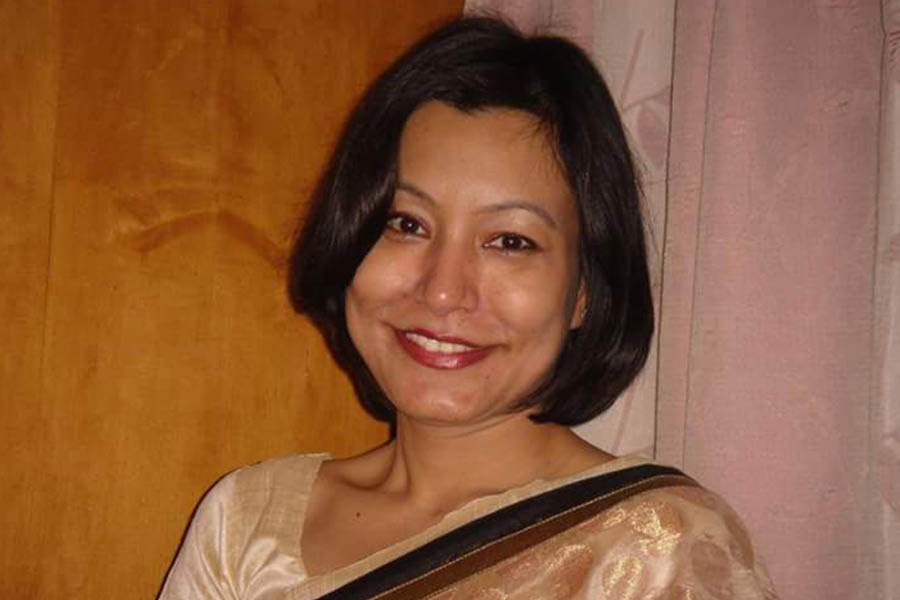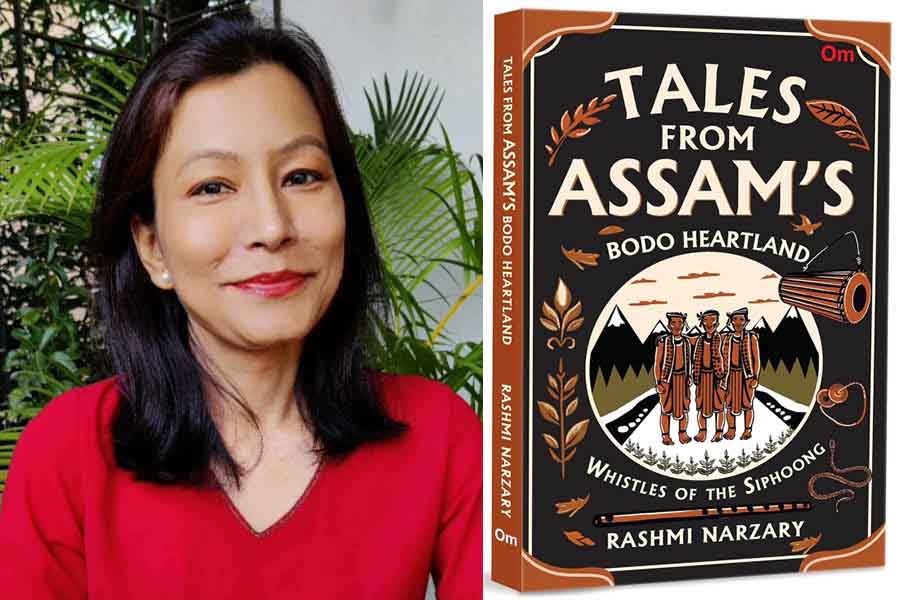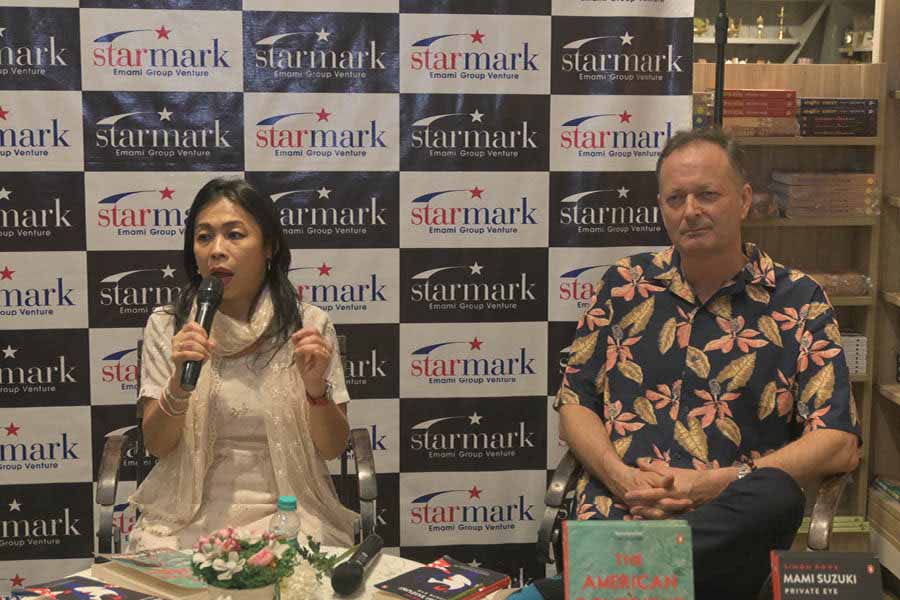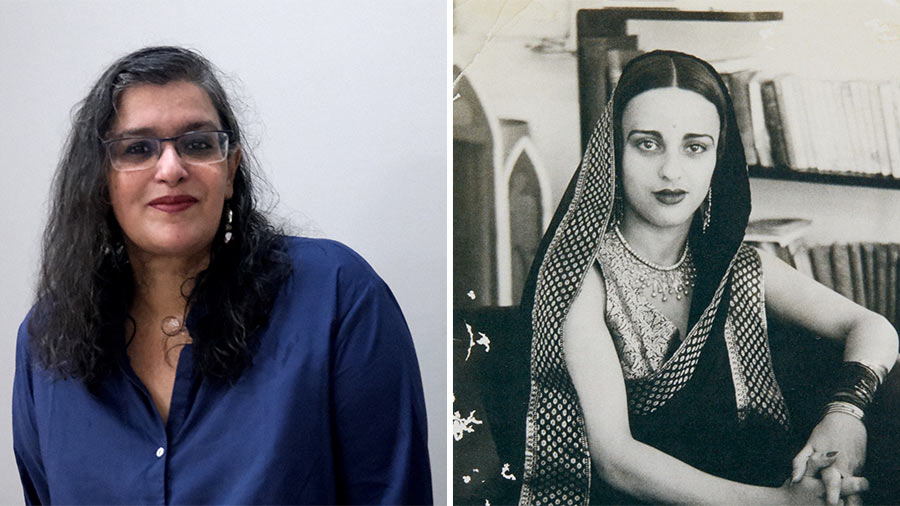The timeless charm of storytelling is nurturing at its very core. It nurtures memory, connection and culture, affirming identities and giving them space and recognition across generations, geography and time. This virtue of storytelling is precisely what Rashmi Narzary taps into in her new book, Whistles of the Siphoong: Tales from Assam’s Bodo Heartland (published by Om Books International).
A Sahitya Akademi winner for children’s literature, Narzary’s work has always been influenced by a reimagination of lores and legends. Dedicating the book to ‘talebearers’, the ones who keep the “past alive and moving”, she brings together spirits and shamans, nature and culture, songs and music in eight exquisite stories, embodying in spirit the twelve-fingered Asidoh Buri, “the living chronicle of the indigenous Bodos” in the stories.
My Kolkata spoke to Narzary about her book, the centrality of music in it, the role of oral storytelling, Bodo culture in her own life, and much more. Edited excerpts from the conversation follow.
‘I let music weave through the tales like a yarn through fabric’
My Kolkata: What is the story behind the stories of the book? What was the driving force behind writing the book?
Rashmi Narzary: There used to be this Santhal family across the mud track from my husband’s ancestral home in rural Gossaigaon, in the district of Kokrajhar, Assam. The family’s cute compound with its humble, sparse homestead, alive with chickens, a goat, piglets under a large, spreading jackfruit tree, a mud-plastered, neat and unfenced courtyard had such a poignant allure — in the mist-filled quiet of the winter morning — that it snuggled into the nook of my heart and imagination. That moment, and that picture, stayed on with me and egged me on to bring to life Jugnu, the little Santhal boy in the story, “Song of Spring”, and Ojhai, the old Bodo man across the mud path from Jugnu’s home. And because almost every cherished moment and occasion among the Bodos is enhanced with music, especially that of the flute, I let the siphoong, which is the Bodo word for a flute, play on to weave a connection between Jugnu and Ojhai.
However, before I went on to tell the story of Jugnu and Ojhai, I wanted to tell how lovingly Ojhai crafted his own flutes, his passion for them, how they vary in size and emotion, and how, as he breathed into them, it was as if he was breathing his soul into the flutes. That’s how the first story of the collection, “Barter of the Siphoong”, came to be.
Then on, there were appealing things and places about our land and people that I wished to take to a global platform, but by way of simple fiction and storytelling. And because there’s a certain universality about music that transcends all barriers of language to touch people, I let music weave through the tales like a yarn through fabric.
‘Music and oral storytelling have occupied a large part of my being’
The siphoong and its music becomes one of the central characters in the book. Lores and songs are also beautifully embedded in the text. You have also dedicated the book to ‘talebearers’, who keep legends and lores alive and overcome the test of time. What space has music and oral storytelling occupied in your life?
Yes, the siphoong is the protagonist here. I suppose the hills, forests and greens of Shillong, where I lived a beautiful part of my childhood and formative years, lived on with me even after our family moved down to Assam. It is these that leave an indelible impression on my stories. As for crafting a person as a storyteller, an upbringing or environment only influences the style or mood of storytelling, and can only affect the narration so much. A storyteller, I feel, is born a storyteller.
Music and oral storytelling have occupied a large part of my being. You know, in these parts of the land, it’s magical how every tree, every river, every hill has its own wondrous story. And yet, none of these has the credibility of being the truth, which makes it all the more beautiful and awe-inspiring. Almost like Santa Claus. This is where the ‘talebearers’ of our land step in. Sometimes they are the grandparents or elderly folks, sometimes priests and, at other times, loving mothers putting their children to sleep with a lore. And each time these lores are told, they’re given lovely perceptions by each talebearer. However, in Whistles of the Siphoong, all verses aren’t folk, nor prevalent. Some are my own little cooked-up rhymes!
The talebearer in this book is all the more significant, for it is she, the twelve-fingered albino, Asidoh Buri, who initiates the reader into the origin of the Bodos, their customs and ways, by way of narrating a story and not by just stating facts like a chapter from history.
There is a certain simplicity and lyricism in the book that immediately draws the reader in. Was the style of storytelling consciously implemented or did it come about on its own?
How skillfully you take note of that, thank you! Yes, I feel the language came to be so on its own. When the tales involve old men, music, prayer rituals, festivities and an abundance of sensitive human emotions and their connection with nature, legends and lore, the language can only be simple, I suppose. And where music plays the major role, the language is nothing but lyrical. Any other style wouldn’t touch the heartstrings. In any case, I believe in simple, flowing language for my storytelling, as if I’m conversing with my reader over a relaxing cuppa.
While the inclusion of Bodo terms and practices aids in authentically setting up the cultural context, did you encounter any issues in translating it for an audience largely unfamiliar with it, and writing in English, a language so different from the Bodo language? Did you translate the songs included in the text yourself and was the process difficult considering how colloquial songs, poetry, etc. do not necessarily have a fixed meaning?
Well, I didn’t really encounter any issues translating the terms, lores, prayers etc. because I speak and understand Bodo, as it’s my mother tongue. So, yes, the songs are more or less translated by me, making all effort to keep their meaning as in Bodo. However, a few of the songs, which are rendered only in English in the book, are neither folk nor translated. They are originally written in English by me and attributed to one character or the other.
‘Highlighting the simple lifestyle of the Bodos, their humour and honesty, their cuisine, a little bit of their lores and legends…’

The Bodo heartland has the same sense of joy and grief as any other place, says Narzary Wikimedia Commons
The stories in the collection are an interesting blend of various themes. For example, on the one hand, a story involving spirits gives the book an element of magical realism. On the other hand, the stories in the backdrop of the pandemic or those carrying hints of grim political realities root the text in the world we inhabit.
Besides politics and socio-political unrest and magical realism, which form only two aspects, the Bodo heartland has the same, countless universal aspects of joy and grief, love and belonging, faith and festival, hardship and hope, and are equally affected by the seasons and natural phenomena like any other people anywhere else. It was only natural to narrate stories that included and involved all of these emotions and facets. Otherwise, the portrayal of an indigenous people with a rich heritage would remain incomplete. I hoped to draw from and highlight the simple lifestyle of the Bodos, their humour and honesty, their cuisine, a little bit of their lores and legends, the importance of music in their lives and rituals and, most of all, their reverence towards nature, and their values.
‘There have been anxious moments, but also very humbling ones’

Narzary acknowledges the fact that she is looked up to for answers regarding “my people, my land” Rashmi Narzary/Facebook
Writing the book and having it published must have been a creatively fulfilling experience. But the book also comes with a certain responsibility, perhaps even a burden. That of being a representative of Northeast literature and of honouring a culture and its people while making a largely unaware population aware of the ways of its existence.
It was indeed an enormously fulfilling experience! While I was writing this book, I found myself so engrossed in the beauty of the stories, in delving into the lesser-known lores and legends of the Bodos, the different versions of these legends, and of reimagining and creating events, songs, characters and backdrops, that nothing, absolutely nothing had a chance to come in the way to hinder the creative process.
And yes, it’s truly a huge responsibility. I know I’m being looked up to for answers regarding my people, my land. There have been times when I, as an individual, have to give way to myself as part of my collective community. There have been anxious moments, but also very humbling ones. And yet, when you’re passionate about storytelling, even these don’t hinder the creative process.
From writing children’s books and winning the Sahitya Akademi award to penning Whistles of the Siphoong, what has the journey been like for you as an author inhabiting the space of Indian writing and publishing? What are your qualms and hopes?
It has been an unhurried journey. One dotted with rejections and dejections along with motivation and opportunities and, most importantly, gratification. I say unhurried mainly because of three things. First, family and home come first to me. Second, I’ve never been very ambitious, never a go-getter. I was never into the vigorous promotion of my work, seeking publishers or paying up to get published. I love a very leisurely life, to the extent of being lazy! Third, I let stories take their own time in my mind, shaping, maturing, shifting and gaining force, before they come out on paper.
In terms of qualms, I have none. As for hopes, I hope to be read more extensively, to interact with more people, especially young people, and tell them to be patient, passionate and focused when it comes to all things creative and to life in general. And to tell them that creative writing isn’t just about telling stories, but also about storytelling. At the end of the day, I hope to be of some help, in whatever small, humble way.
Chakrika Pandey is a graduate in English literature, currently working as an editor at Om Books International.


